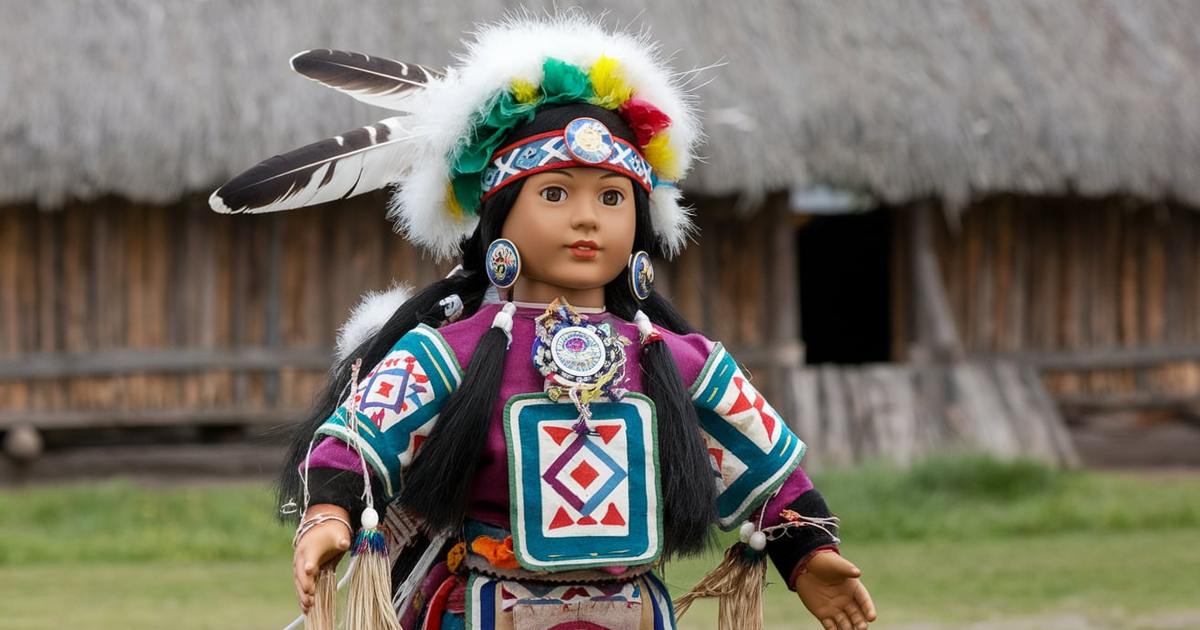Clothing has been about more than practicality—it tells memories, conveys identity, and displays cultural history. For the indigenous peoples of the US, particularly the Northwest Coast tribes, traditional garb and regalia hold profound importance, serving as logos of records, artistry, and spiritual connection. From exquisitely crafted regalia dolls to problematic garments long-established from natural substances, those portions testify to resilience and creativity.
This blog explores the rich legacy of traditional American garb, with a focal point on the Northwest Coast. We’ll speak about the cultural significance of regalia dolls, the complicated craftsmanship behind conventional clothes, and how these traditions are being preserved and celebrated today. We’ll also look at their effect on famous lifestyles and why understanding—and respecting—cultural and historical past is more important than ever.
Table of Contents
Regalia Dolls of the Northwest Coast
Regalia dolls are greater than simply hand-made figures; they are effective representations of tribal identity and records, imbued with deep cultural importance. These dolls are miniature replicas of the ceremonial regalia worn by the Pacific Northwest Coast indigenous peoples, along with the Tlingit, Haida, and Kwakwaka’wakw tribes.
A Glimpse into Their History
Regalia dolls have been a part of Northwest Coast culture, frequently created to teach kids about their history, tribal customs, and specific ceremonial practices. Historically, the dolls have been made using natural substances, which include timber, bone, and animal hides. Crafting these collectable figurines turned into a meticulous method, requiring the artist to duplicate the intricate designs and textiles of full-sized regalia.
Each doll tells a tale, representing unique ceremonies, family lineage, or spiritual beliefs. For example, dolls decorated with masks frequently characterize ancestral spirits or mythical beings sizeable to tribal lore.
Materials and Craftsmanship
The substances used to create regalia dolls reflect the herbal resources of the Pacific Northwest. Bark, dyed grasses, and woven cedar are common additives, while hand-painted designs communicate cultural narratives. The colours and patterns on the dolls carry symbolic meaning, representing tribal identity, clan association, or religious themes, including harmony with nature.
The craftsmanship goes beyond aesthetics; these dolls function as instructional gear and religious symbols, bridging generations and maintaining traditions alive.
Traditional Clothing of the Northwest Coast
Northwest Coast Apparel stands proud of its first-rate integration of shape, function, and artistry. Worn during ceremonies and daily life, these garments are crafted with techniques passed down through generations.
Materials Rooted in Nature
The indigenous tribes of the Pacific Northwest used resources available in their surroundings to create their garb. Cedar bark, mountain goat wool, and even salmon skin had been converted into garments through specialized techniques like weaving and embroidery.
For instance, finely woven cedar bark gowns served as a defensive garb towards the wet, cool weather. These robes have often been softened and dyed before being meticulously woven into difficult styles. Mountain goat wool was also used to create ceremonial robes, with exact designs symbolizing tribal stories or cultural values.
Meaningful Designs and Techniques
The designs determined on Northwest Coast garments mirror a deep connection to the environment and spiritual beliefs. Patterns frequently depict animals, including ravens, eagles, and orcas, which constitute clans or spiritual totems. The dyeing, beading, and weaving system became deeply ceremonial, reflecting recognition of the substances and the testimonies they embodied.
These clothes were not simply clothing but wearable art pieces that connected the wearer to their history, network, and the herbal world.
Modern Preservation and Celebration
Traditional American apparel and regalia face demanding situations in surviving the passage of time, yet they may be celebrated and preserved through diverse efforts. Museums, cultural facilities, and personal artists play a vital position in preserving these traditions alive.
The Role of Museums and Cultural Institutions
Museums, including the National Museum of the American Indian and the Burke Museum in Seattle, have dedicated widespread space to showcasing regalia and traditional clothes from the Northwest Coast. These reveals are no longer effective in preserving these artefacts but also teach the public, fostering a broader appreciation for Indigenous craftsmanship and the historical past.
Interactive workshops and demonstrations have emerged as commonplace in cultural facilities, allowing traffic to learn how traditional garments and dolls are made. These efforts make sure that the talents and stories in the back of the artefacts remain to resonate with future generations.
Contemporary Artists Reviving Tradition
Modern Indigenous artists are mixing traditional strategies with present-day patterns to bring new existence to regalia and garments. Designers like Dorothy Grant, a renowned Haida fashion artist, create garb that includes conventional styles into excessive-fashion pieces, showcasing their cultural importance to worldwide audiences.
This dynamic approach guarantees that conventional garb stays a living art shape, evolving while staying grounded in its ancient roots.
Traditional Clothing in Popular Culture
The impact of Northwest Coast regalia and garb has seeped into the popular lifestyle and the fashion enterprise. Designers and brands occasionally draw inspiration from indigenous styles and strategies, highlighting the artistry behind these garments.
Navigating Cultural Appropriation
However, this impact comes with demanding situations, specifically regarding the best line between cultural appreciation and appropriation. Appropriation happens when cultural symbols are used without permission or admiration, regularly missing the deep context they hold.
Efforts are being made to deal with this issue, with advocates emphasizing the importance of collaboration with indigenous groups. Authentic illustration ensures that cultural background is celebrated appropriately while allowing Indigenous artisans to benefit financially from their work.
Steps Towards Cultural Exchange
Some designers and arts corporations now partner with Indigenous groups, creating opportunities for cultural alternatives and moral representation. These collaborations result in products that honour lifestyles while making them handy to broader audiences and fostering mutual expertise and respect.
Understanding and Supporting Cultural Heritage
Traditional American garb and regalia, particularly those from the Northwest Coast, are tons more than relics of the beyond. They are living representations of a rich cultural and historical past, teaching, inspiring, and reminding us of the deep connections between identity, artwork, and the natural world.
Supporting those traditions can take much bureaucracy, from journeying to museums to purchasing from indigenous artists. Small actions, like educating oneself about the cultural significance of these artefacts, can make a significant difference in preserving and respecting heritage.
By understanding and celebrating conventional garb and regalia, we honour the craftsmanship of the beyond and make sure these traditions remain colourful and meaningful for generations to come.

